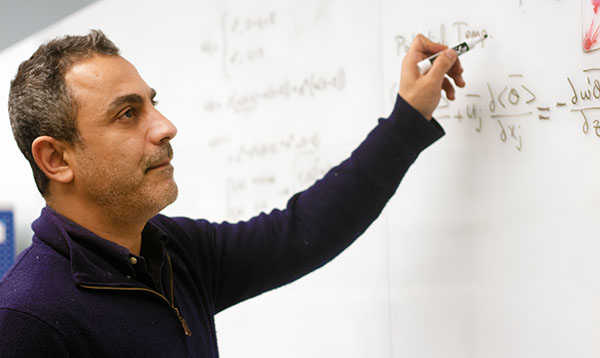Urban Pollution Solutions Through Dispersion Modeling and Atmospheric Measurements

Khaled Ghannam joined the Northeastern University Civil and Environmental Engineering department in August 2023 as an Assistant Professor.
Ghannam received his PhD in Environmental Sciences from Duke University in 2017. From 2017 to 2019, he was a postdoctoral researcher at Princeton University’s Department of Civil and Environmental Engineering. From 2019 to 2023, he worked as a research scientist with Princeton’s Geophysical Fluid Dynamics lab in collaboration with the National Oceanic and Atmospheric Administration.
Ghannam said that the Atmospheric Engineering position he secured at Northeastern “aligns perfectly” with his research focus on atmospheric modeling and wind turbulence over complex topography.
“I was glad that Northeastern thought this topic was so important that they posted a position for it,” said Ghannam. “The topic of Atmospheric/Dispersion Modeling is emerging as a really critical one in the context of urban climate and climate change.”
Ghannam is part of the Intelligent Solutions to Urban Pollution for Equity and Resilience (iSUPER), a Northeastern initiative that will integrate sensors and prediction models to detect pollution on a neighborhood-level scale. The resulting data will hopefully inform policy decisions to improve urban air quality. Ghannam is the first of a series of planned faculty hires under the The iSUPER impact engine, led by CEE Professor Yang Zhang.
Part of this work is understanding how wind flow in the vicinity of buildings affects the transport of Greenhouse gases and air pollutants. This is a dispersion modeling problem, where Ghannam’s expertise lies.
Ghannam is seeking a PhD student to join his research team in Fall 2024 for his project focusing on measuring atmospheric turbulence and Greenhouse gases.
The plan involves setting up a flux/meteorological tower atop Richards Hall at Northeastern University, the tallest structure within a 500-meter radius, to gauge wind flow patterns at a high frequency to resolve turbulence.
This initiative aims to conduct a field measurement campaign examining the peculiar nature of the urban atmospheric boundary layer, specifically studying wind flow, CO2 levels, and water vapor above the city.
“It’s becoming increasingly important to measure how much cities affect the heat, water vaper, carbon dioxide levels, and wind flow of the atmosphere,” Ghannam said.